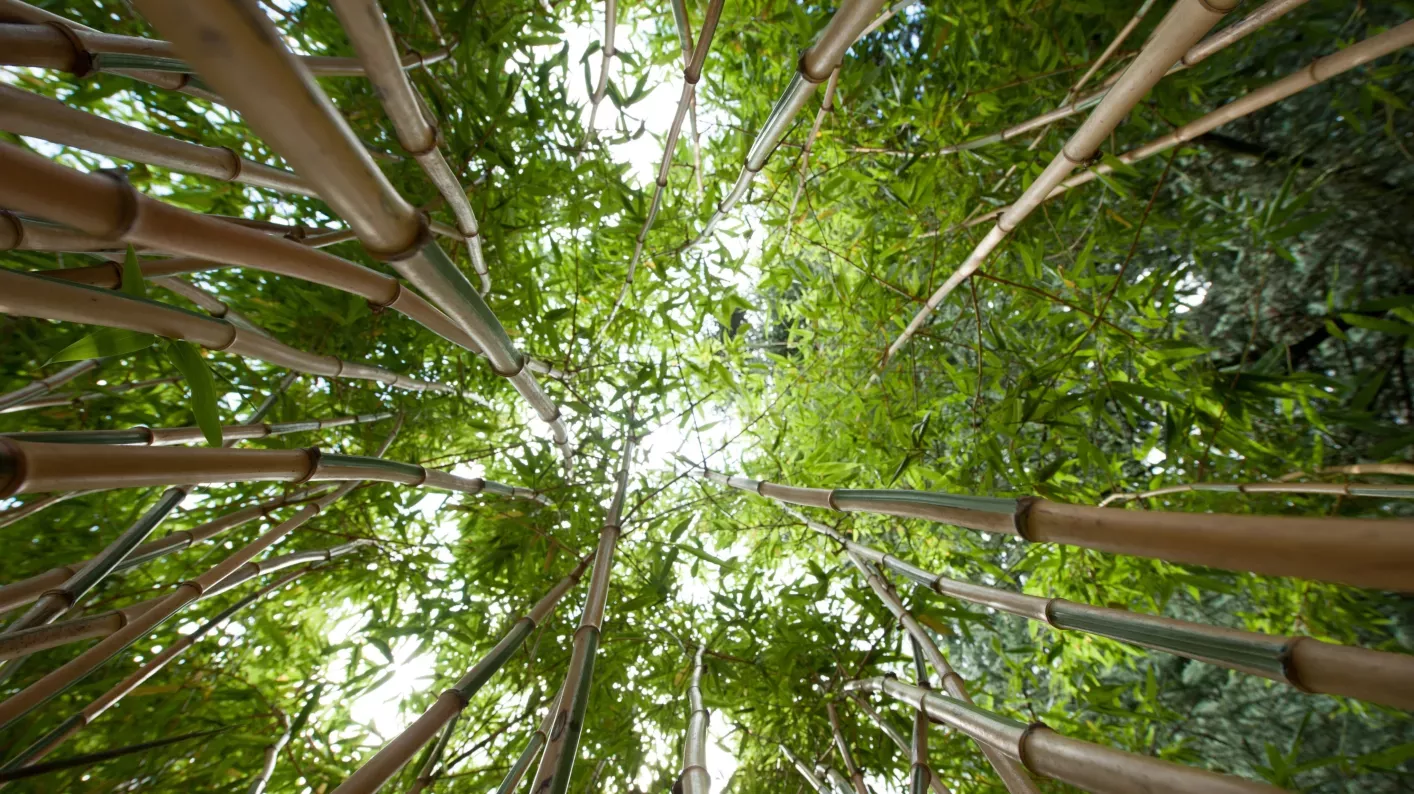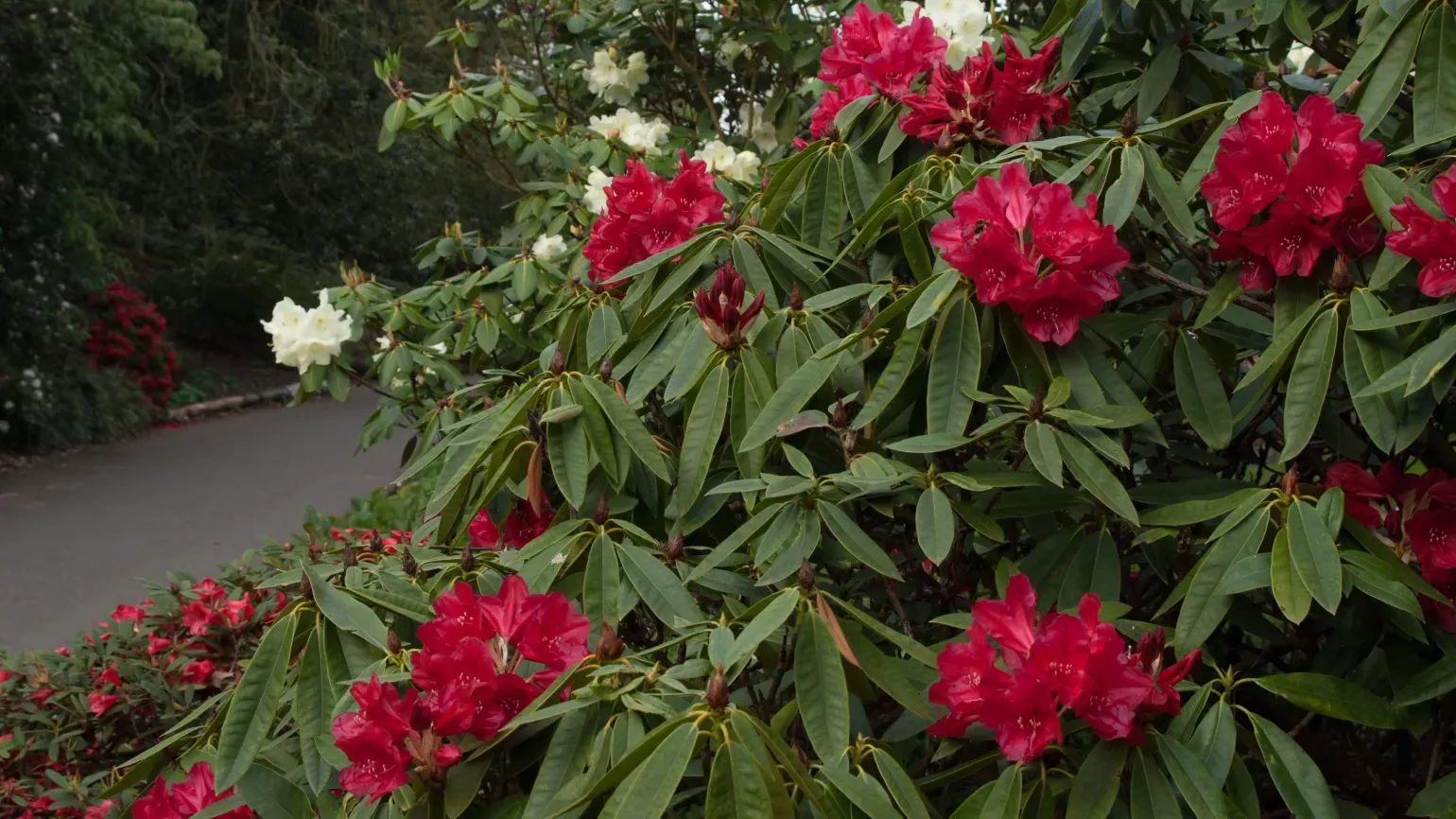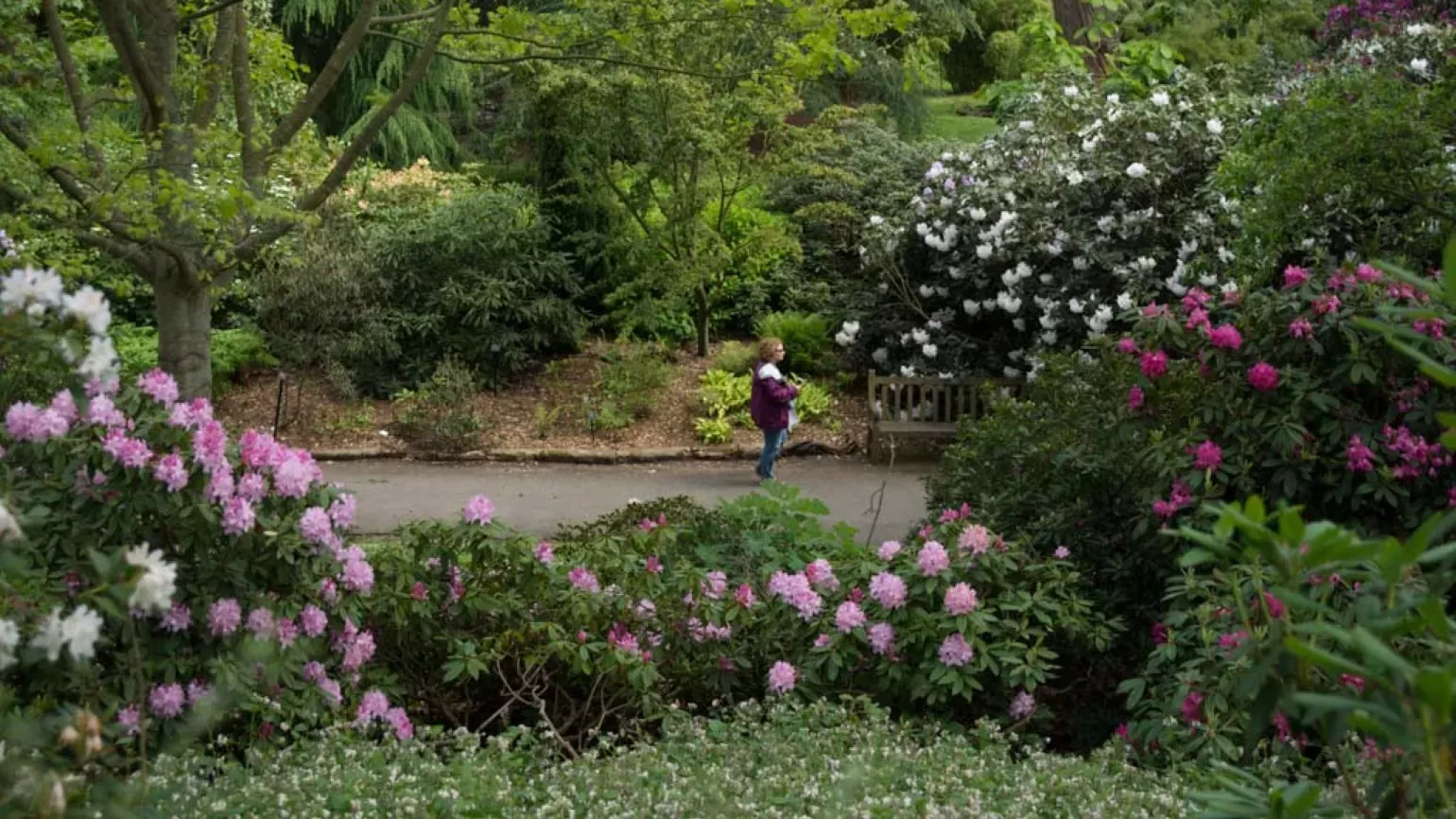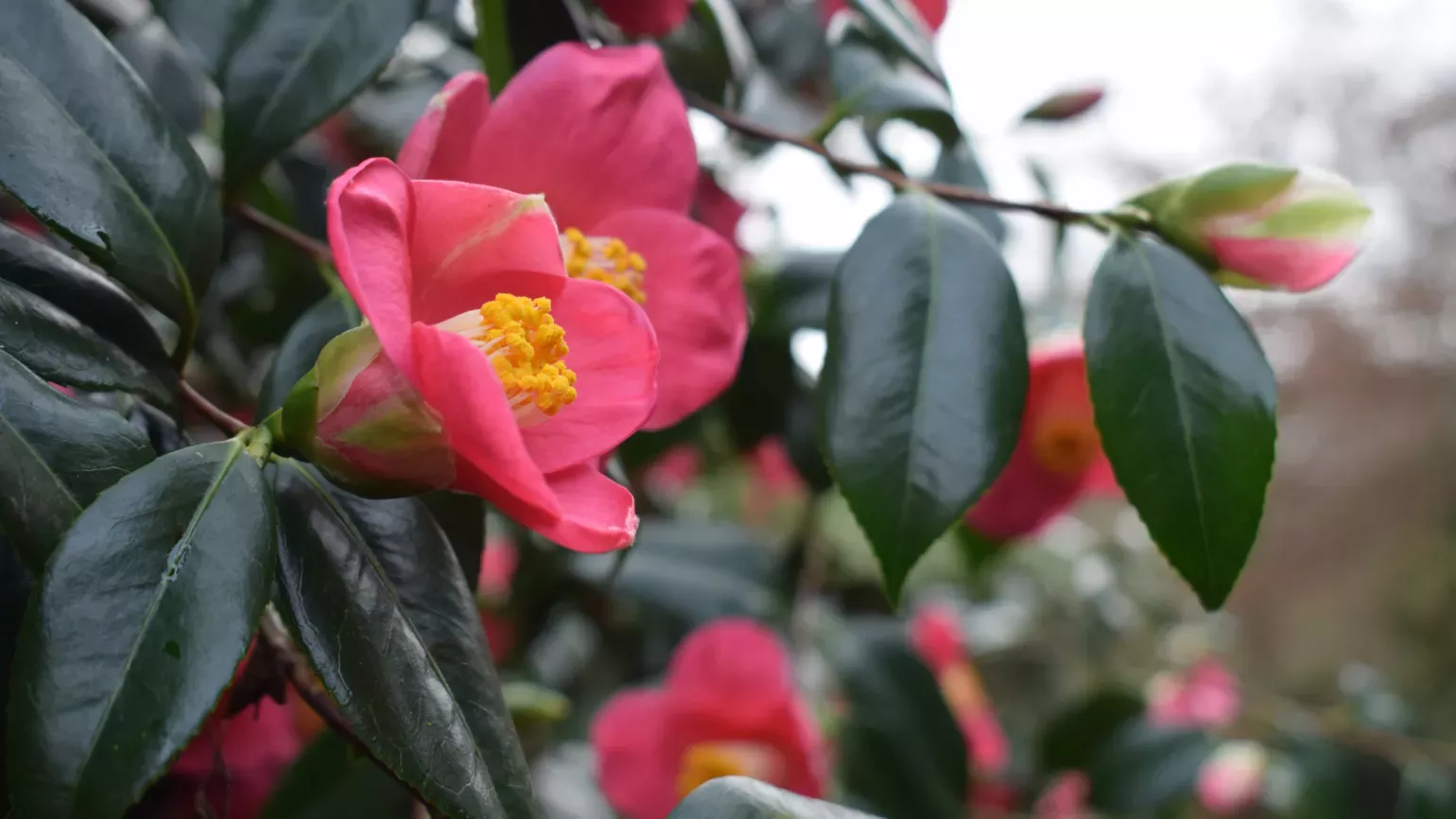
Kew Gardens
Bamboo Garden and Minka House
The fastest growing woody plants in the world, bamboos create a dense and vibrant landscape wherever they grow.
Explore the Bamboo Garden
Sir Joseph Hooker brought back many new specimens of rhododendron from his travels to the Himalaya in the mid-19th century. Struck by the spectacular beauty of these colourful flowers, he exclaimed:
'The splendour of the Rhododendrons is marvellous: there are 10 kinds on this hill, scarlet, white, lilac, yellow, pink, marroon[sic],: the cliffs actually bloom with them.'
Today, 150 years later, dense clusters of rhododendrons flower in the dell, including unique hybrids not found elsewhere in the world.




Woodchip paths wind around examples such as the pink-flowered Rhododendron kotschyi, from the Carpathian and Balkan mountains, and Kew’s oldest type, R. campanulatum.
This hidden corner of Kew is at its prime in April and May when huge bushes burst into colour, showcasing richly-hued petals at every angle.
We may occasionally need to close attractions for maintenance or visitor safety: check for planned closures and visitor notices before you visit.

Kew Gardens
The fastest growing woody plants in the world, bamboos create a dense and vibrant landscape wherever they grow.
Explore the Bamboo Garden
Kew Science
Philip Stevenson (Plant Chemist) and Alison Scott-Brown (Plant/Insect Ecologist) from Kew’s Natural Capital and Plant Health department report on the toxicity of natural chemicals in the nectar and leaves of Rhododendron.
Hidden poisons
Kew Science
Sven Buerki, from Kew’s Jodrell Laboratory, discusses the idea that islands located in the region today occupied by South-East Asia played a major role in the early diversification of flowering plants.
Early flowering plant diversification